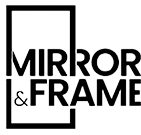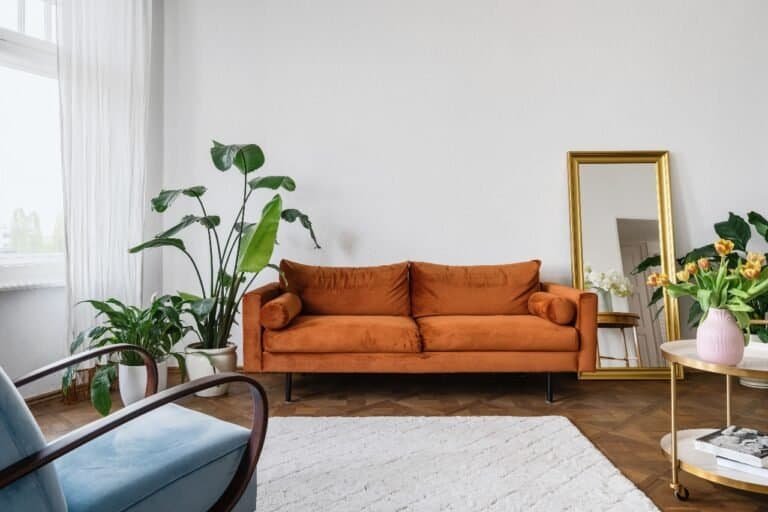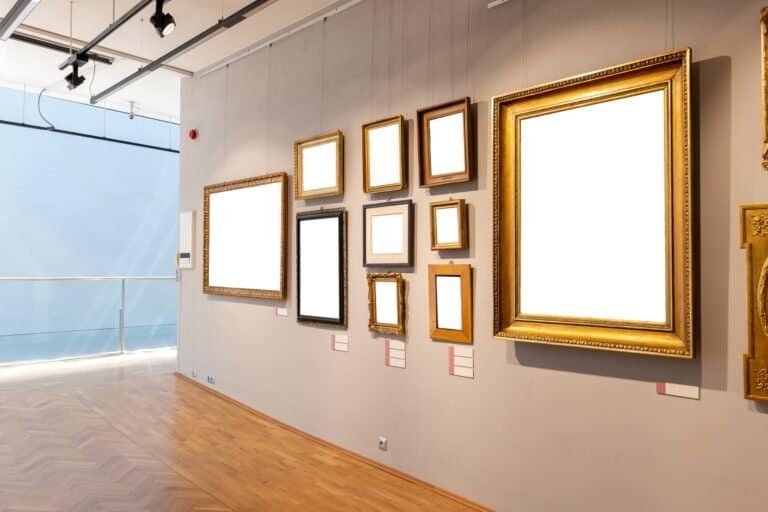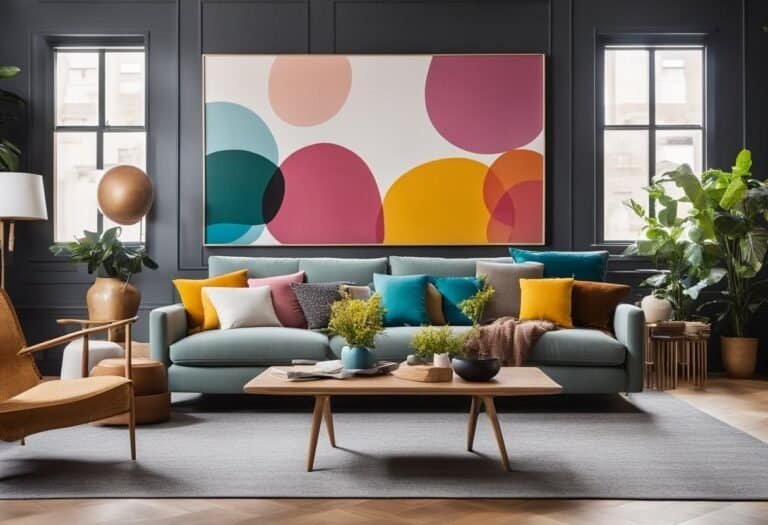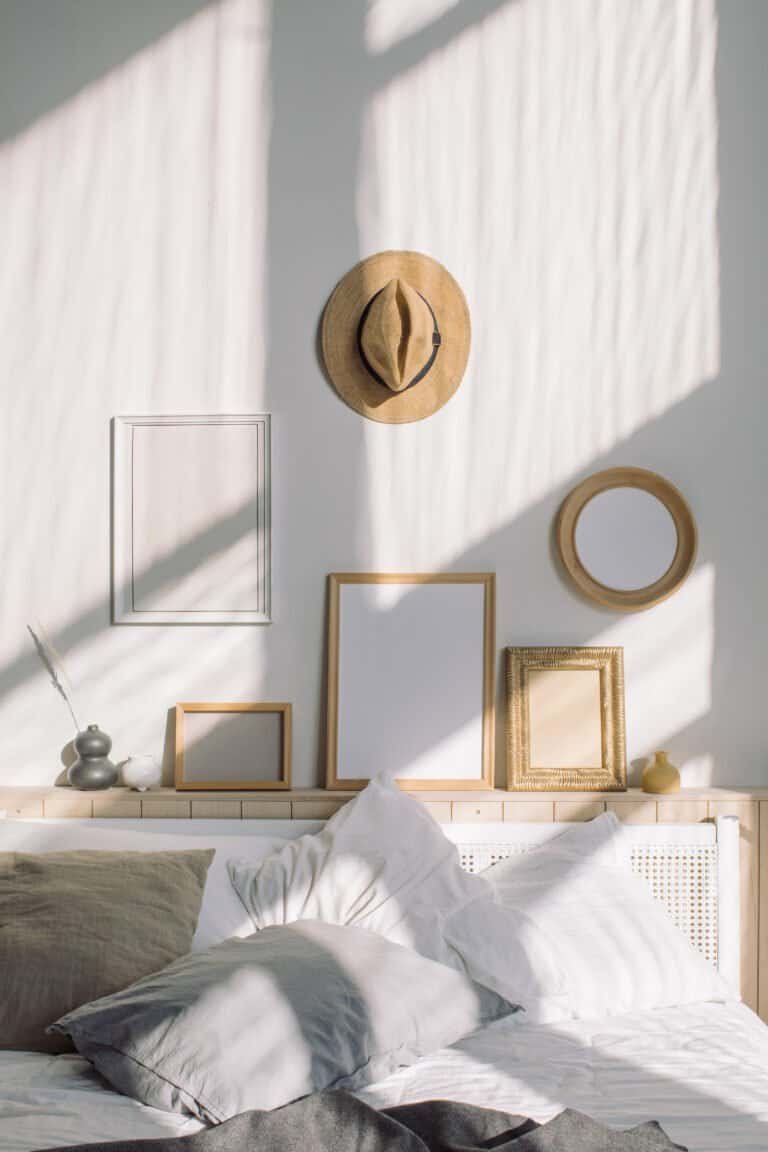The Pros and Cons of Different Frame Materials for Lasting Quality
When investing in frames for your cherished artwork, photographs, or mirrors, the material you choose plays a crucial role in determining both aesthetic appeal and longevity. At Mirror and Frame, we understand that selecting the right frame material involves balancing considerations of durability, appearance, cost, and environmental impact. This guide explores the advantages and disadvantages of various frame materials to help you make an informed decision that ensures lasting quality for your precious pieces.

Wood: The Timeless Classic
Wood remains the most popular framing material for good reason. Its natural warmth and versatility have made it a staple in the framing industry for centuries.
Pros:
- Timeless aesthetic: Wood frames offer a classic, warm appearance that complements virtually any décor style, from traditional to contemporary.
- Versatility: Available in countless profiles, finishes, and stains, wood can be customized to match any interior design scheme.
- Durability: High-quality hardwood frames can last for generations when properly maintained.
- Workability: Wood can be easily carved, shaped, and detailed to create intricate designs, as seen in our custom carved frame collection.
- Insulation properties: Wood provides natural insulation against temperature fluctuations, offering some protection for valuable artwork.
Cons:
- Susceptibility to environmental conditions: Wood can warp, crack, or shrink due to changes in humidity and temperature.
- Pest vulnerability: Without proper treatment, wood can be susceptible to insect damage.
- Maintenance requirements: Wood frames need regular care to maintain their appearance and structural integrity.
- Cost: High-quality hardwood frames can be more expensive than synthetic alternatives.
- Weight: Particularly for larger pieces, wood frames can be quite heavy, making installation more challenging.
Best Uses:
Wood frames are ideal for valuable artwork, family heirlooms, and pieces that require a traditional look. They’re particularly well-suited for paintings, vintage photographs, and substantial mirrors where their classic appeal enhances the displayed item.
Aluminum: Modern Minimalism
Aluminum frames offer sleek, contemporary aesthetics with practical benefits that make them increasingly popular for modern interiors.
Pros:
- Lightweight yet strong: Aluminum provides excellent structural integrity while being much lighter than wood or other metals.
- Corrosion resistance: Properly finished aluminum won’t rust or deteriorate in humid environments.
- Low maintenance: These frames require minimal upkeep to maintain their appearance.
- Precise profiles: The manufacturing process allows for consistent, clean lines ideal for contemporary aesthetics.
- Recyclability: Aluminum is 100% recyclable, making it an environmentally responsible choice.
Cons:
- Limited warmth: Aluminum frames may appear cold or industrial in traditional settings.
- Denting susceptibility: Though strong, aluminum can dent more easily than harder metals.
- Limited design variety: While improving, aluminum frames offer fewer ornate options compared to wood.
- Temperature conductivity: Aluminum conducts temperature, potentially creating condensation issues in extreme environments.
- Cost: High-quality anodized aluminum frames can be relatively expensive.
Best Uses:
Aluminum frames excel in contemporary spaces, commercial environments, and situations where lightweight materials are necessary. They’re particularly well-suited for our minimalist mirror collection, photography displays, and in humidity-prone areas like bathrooms.
Composite Materials: Practical Innovation
Composite frames, made from engineered wood products or polymer blends, offer practical alternatives that balance cost with performance.
Pros:
- Consistency: Manufactured to precise specifications with uniform quality.
- Stability: Less susceptible to warping and environmental changes than solid wood.
- Cost-effectiveness: Typically more affordable than hardwood alternatives.
- Versatility: Available in a wide range of finishes that mimic more expensive materials.
- Weight advantage: Lighter than solid wood, making installation easier for larger pieces.
Cons:
- Perceived value: May be viewed as less prestigious than natural materials.
- Repairability: Damage to composite frames can be more difficult to repair than wood.
- Environmental considerations: Some composite materials may contain adhesives or chemicals of concern.
- Limited lifespan: Generally don’t last as long as high-quality wood or metal frames.
- Finish durability: Surface finishes may chip or peel over time, revealing the substrate.
Best Uses:
Composite frames are excellent for less formal settings, children’s rooms, temporary displays, or situations where cost is a primary consideration. They’re also good choices for seasonal decorative mirrors that may be changed out regularly.
Brass and Other Metals: Luxurious Durability
Metal frames made from brass, bronze, or steel offer distinctive elegance with exceptional longevity.
Pros:
- Exceptional durability: Metal frames can last for generations with minimal degradation.
- Distinctive appearance: The unique patina that develops on brass and bronze adds character over time.
- Structural strength: Metal frames provide superior support for heavier items.
- Fire resistance: Unlike wood or composites, metal frames won’t contribute to fire spread.
- Precision manufacturing: Modern techniques allow for incredibly detailed designs.
Cons:
- Weight: Metal frames are typically the heaviest option, requiring secure mounting.
- Cost: High-quality brass or bronze frames represent a significant investment.
- Maintenance needs: Some metals require regular polishing to maintain their appearance.
- Tarnishing potential: Without proper care, many metals will tarnish or corrode over time.
- Temperature sensitivity: Metals expand and contract with temperature changes.
Best Uses:
Metal frames are ideal for statement pieces, heirloom-quality displays, and situations where exceptional durability is required. Our luxury mirror collection features handcrafted brass frames that exemplify timeless elegance and lasting quality.
Plastic and Acrylic: Practical Solutions
Modern plastic and acrylic frames offer practical benefits for specific applications while addressing budget constraints.
Pros:
- Affordability: Generally the most economical framing option.
- Lightweight: Extremely easy to hang and transport.
- Durability in certain environments: Resistant to moisture and humidity damage.
- Safety factors: Less dangerous if broken, making them suitable for children’s spaces.
- Color options: Available in virtually unlimited colors without requiring paints or stains.
Cons:
- Limited prestige: Often perceived as lower quality regardless of actual durability.
- UV sensitivity: Many plastics yellow or become brittle with prolonged sun exposure.
- Scratch vulnerability: More easily scratched than harder materials.
- Environmental impact: Most plastics are petroleum-based and not biodegradable.
- Less stable: May warp or bend over time, especially in larger sizes.
Best Uses:
Plastic and acrylic frames are ideal for casual displays, children’s artwork, temporary exhibitions, and spaces where moisture resistance is crucial. They’re also excellent for bathroom mirror frames where practicality trumps tradition.
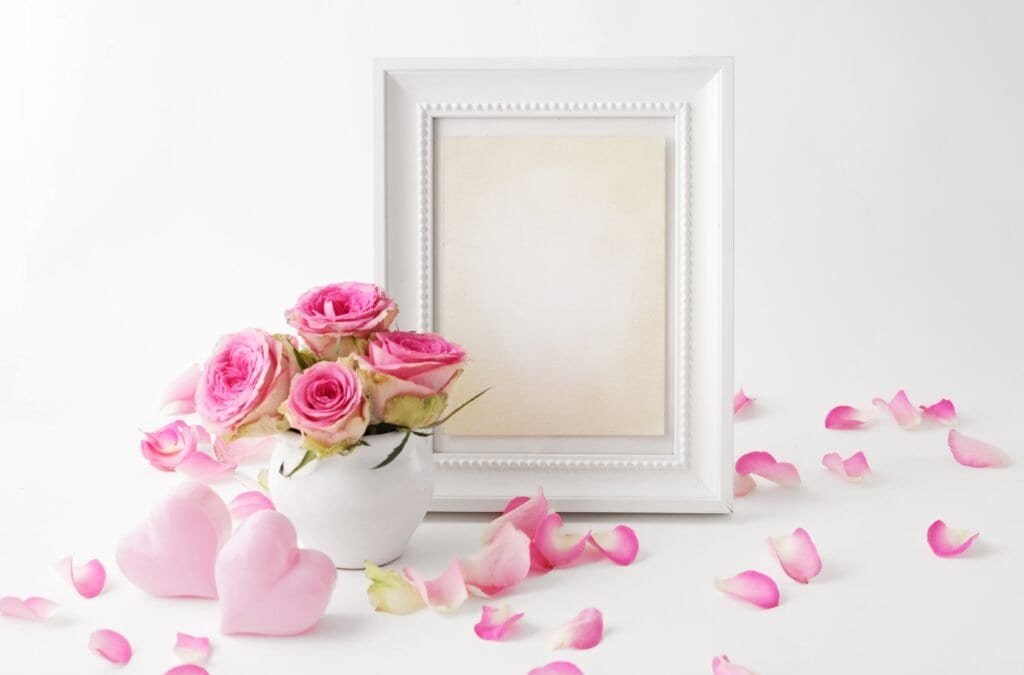
Considerations for Long-Term Quality
Regardless of the frame material you choose, several factors influence the lasting quality of your frames:
Construction Quality
The joinery methods used in frame construction often matter more than the material itself. High-quality corner joints, proper backing support, and attention to detail during assembly contribute significantly to frame longevity. At Mirror and Frame, our craftsmanship standards ensure every frame meets exacting quality specifications.
Finish Application
The protective finish applied to any frame material serves as its first line of defense against environmental damage. Multi-step finishing processes with proper sealing make an enormous difference in frame durability. According to a study by the Fine Art Trade Guild, proper finishing can extend frame life by up to 60%.
Environmental Conditions
Even the highest quality frames will deteriorate prematurely if subjected to extreme conditions. Direct sunlight, high humidity, significant temperature fluctuations, and pollutants all accelerate aging. Consider the display environment when selecting your frame material.
Glass and Glazing Options
The glass or acrylic glazing you choose impacts not only the visibility of your displayed item but also its protection. UV-filtering glass, museum-quality acrylic, and anti-reflective options provide different levels of protection and clarity. Our guide to glazing options explores these choices in detail.
Making the Right Selection for Your Needs
When choosing a frame material, consider these factors:
- Display purpose: Is this a temporary display or a permanent installation?
- Value of the displayed item: More valuable pieces generally warrant higher-quality framing materials.
- Environmental conditions: Consider humidity, sunlight exposure, and temperature fluctuations.
- Aesthetic requirements: The frame should complement both the displayed item and the surrounding décor.
- Budget constraints: Balance immediate cost considerations with long-term value.
Sustainability Considerations
As environmental awareness grows, sustainability has become an important factor in material selection. At Mirror and Frame, we are committed to responsible sourcing:
- Our wood frames utilize timber from certified sustainable forests
- Metal frames incorporate recycled content wherever possible
- Composite options are selected for low VOC emissions and responsible manufacturing
- Packaging materials are recyclable and minimized
Our sustainability commitment details our ongoing efforts to reduce environmental impact without compromising quality.
Care and Maintenance for Extended Frame Life
Proper maintenance significantly extends the life of any frame material:
Wood Frames
- Dust regularly with a soft cloth
- Apply furniture wax annually
- Keep away from direct sunlight and heat sources
- Maintain consistent humidity levels when possible
Metal Frames
- Clean with appropriate metal polishes
- Apply protective waxes to prevent tarnishing
- Avoid harsh chemical cleaners that may damage finishes
- Check regularly for signs of corrosion, particularly at joints
Composite Frames
- Clean with mild soap and water
- Avoid abrasive cleaners that may damage surface finishes
- Keep away from excessive moisture
- Touch up chips or scratches promptly to prevent further deterioration
Our frame care guide provides detailed maintenance instructions for extending the life of your frames regardless of material.
Conclusion: Investment in Quality
When selecting frame materials, remember that frames serve both aesthetic and protective functions for the items they display. While initial cost is always a consideration, the true value of a frame lies in its ability to enhance and preserve your cherished pieces for years to come.
At Mirror and Frame, we believe that understanding the distinctive properties of different framing materials allows you to make choices that balance immediate appeal with lasting quality. Whether you prefer the warm tradition of wood, the sleek modernity of aluminum, the practical benefits of composites, or the luxurious durability of brass, selecting the right material is the first step toward framing that stands the test of time.
Visit our showroom to experience these materials firsthand, or explore our online catalog to see the full range of options available for your framing needs.
For personalized assistance with your framing projects, contact our design consultants today.
